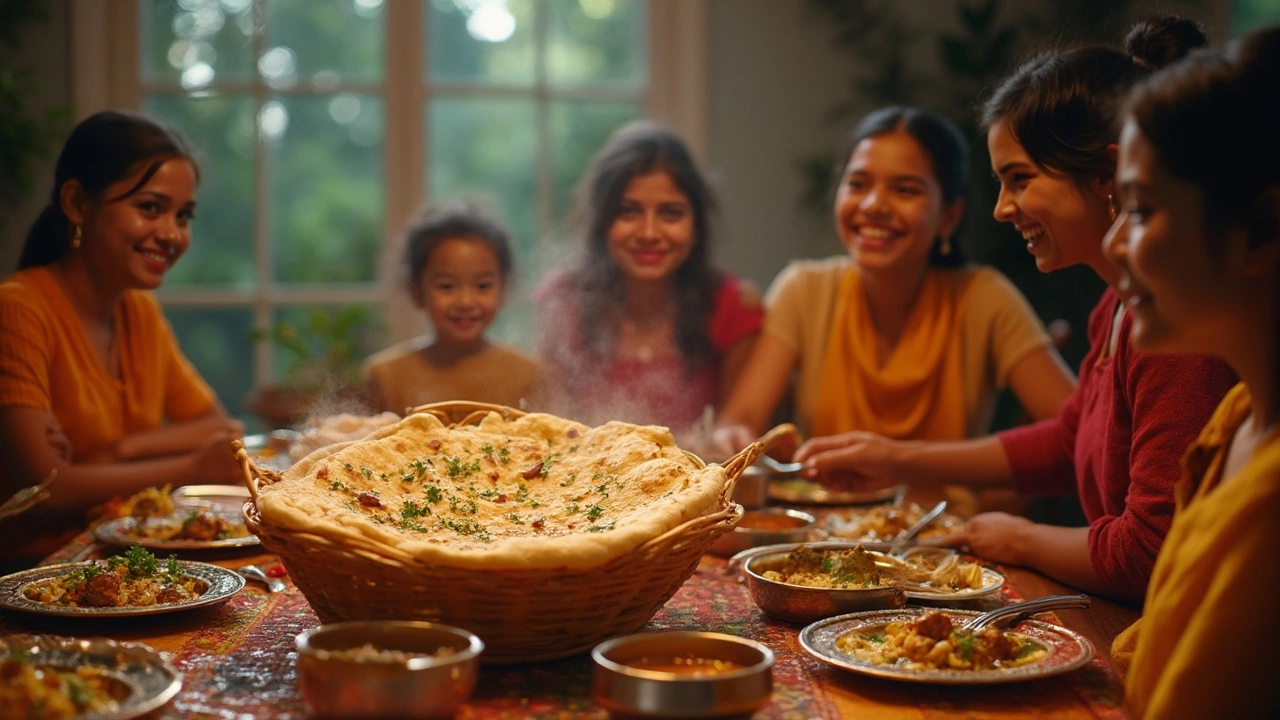Indian Bread: Quick Guides, Tips & Recipes
Did you know a fresh naan can turn any meal into a celebration? Indian breads are simple, versatile, and perfect for soaking up sauces. Whether you’re a beginner or a seasoned cook, the basics stay the same: good flour, right temperature, and a little patience.
Common Types of Indian Bread
There are five breads you’ll see on most Indian tables. Naan is the soft, leavened loaf cooked in a tandoor or on a hot pan. Roti (also called chapati) is an unleavened whole‑wheat flatbread that puffs up on a hot griddle. Paratha is a layered, buttery pan‑fried bread – perfect for breakfast or a hearty lunch. Bhatura is a deep‑fried puffed bread that pairs well with chole. Finally, Appam is a fermented rice‑coconut crepe popular in South India.
All of them start with a basic dough, but the flour you choose changes the texture. Whole‑wheat atta works best for roti and paratha, while all‑purpose flour gives naan its tender crumb. If you want a lighter roti, add a pinch of oil and let the dough rest for 20 minutes.
How to Get Perfect Bread Every Time
First, measure flour by weight, not by cup. One cup of flour can weigh anywhere from 110 g to 150 g, which throws off hydration. Aim for a 2:1 water‑to‑flour ratio for naan and a slightly drier mix for roti.
Second, knead until the dough feels smooth and elastic. This usually takes 5–7 minutes by hand. If the dough sticks, sprinkle a little extra flour, but don’t over‑flour or the bread will be tough.
Third, let the dough rest. A short 15‑minute rest for roti or a longer 1‑hour rise for naan lets the gluten relax and the flavors develop. For paratha, roll the dough thin, brush with melted ghee, fold, and roll again – the layers create that crispy feel.
Fourth, preheat your cooking surface. A cast‑iron skillet or a heavy‑bottomed tawa should be smoking hot before you place the bread. When the dough hits the surface, you’ll hear a quick sizzle; that’s the sign it will puff up.
Finally, flip only once. For naan, brush the top with butter or garlic after the first side is golden, then cover the pan for a few seconds to finish the cooking. For roti, press gently with a clean cloth to encourage puffing, then remove and serve immediately.
Quick tip: keep a damp cloth over cooked breads to retain softness. If you’re making a batch, stack the breads and cover them; they’ll stay warm and pliable for about 30 minutes.
With these basics you can experiment. Add herbs to naan dough, sprinkle cumin seeds on roti, or fold in mashed potatoes for a delicious aloo paratha. Indian breads are forgiving, so feel free to tweak flavors as you go.
Now that you know the types and the step‑by‑step tricks, it’s time to roll up your sleeves and start cooking. Fresh Indian bread on the table will make every meal feel like a celebration.
Naan Disadvantages: What You Need to Know
Naan is a favorite at Indian tables, but it has some downsides people don't usually talk about. This article breaks down what makes naan less healthy than you might expect—even when it's homemade. I'll get into its high calorie, carb, and fat content, plus what goes inside it that might surprise you. This is a practical look at what to watch for if naan is a big part of your meals or if you're cooking it at home. Knowing these facts can help you make smarter choices in the kitchen.
